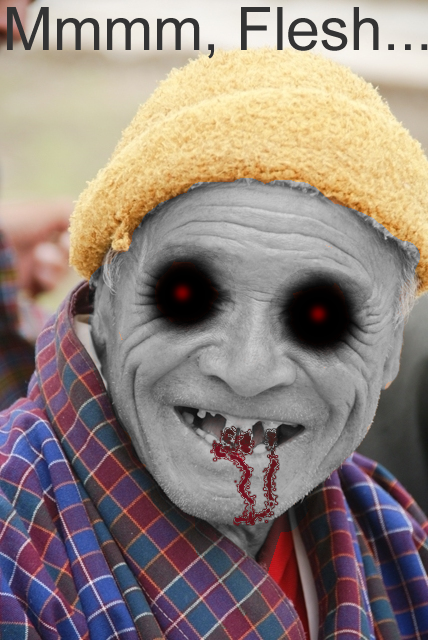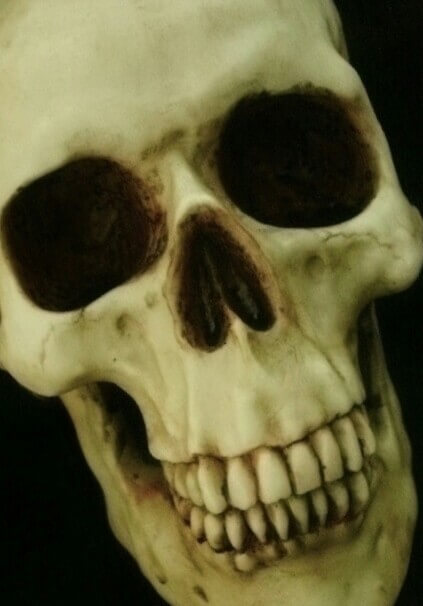The incredible human body and complex mind can endure various weird diseases. There are many we are aware of, but some we don’t know much about. Although scientific research has evolved over the last few decades, there are still many disorders we can’t control, much less cure. Fortunately, for some, we have developed treatment to help lessen the severity.
This post will explore bizarre human diseases of the body and mind. The human brain is an extremely complex organ with billions of neurons. Even today, brain research often leaves scientists puzzled. There are a lot mysteries we have yet to solve. Despite recent advances in neuroscience, it is still going to take a lot more research and studies to understand more of the unanswered questions about the brain. Luckily, scientists aren’t giving up anytime soon.
We will fully cover each of the physical and mental conditions based on evidence gathered from reliable scientific research. You will find the information to be absolutely fascinating. We guarantee these diseases will undoubtedly shock you. Let’s get started with the body.
Weird Diseases Of The Body
The Rare Viral Disease: Monkeypox

Monkeypox is usually transmitted to humans from infected rodents, primates or even pets through direct contact with blood, body fluids, the animal’s lesions or through a bite. The disease usually occurs in remote villages in Central and West Africa. The disease has been found in chimpanzees, monkeys, rabbits, prairie dogs, Gambian rats, ground squirrels and mice. Although it is unknown whether domestic animals (such as cats and dogs) can contract monkeypox, it is safe to assume that all animals can. There is still more research needed.
Although not as infectious as the smallpox virus, monkeypox can has also been known to spread from person to person through direct contact with body fluids, respiratory droplets during direct face-to-face contact and virus-contaminated objects (such as clothing).
The unwanted illness caused from monkeypox begins with patients who experience a headache, fever, nausea, muscle aches, chills and drenching sweats. After around four to seven days, patients will start to experience lesions on the face and trunk. The lesions will typically ulcerate, crust over and finally begin to go away usually after 2-3 weeks. Although the virus is closely related to smallpox, it is also different. Smallpox doesn’t cause the lymph nodes to swell like monkeypox does. Also, monkeypox is less contagious and less deadly.
Treatment: Unfortunately, monkeypox cannot be treated with any medication. Although some patients require hospitalization, most are just advised to rest and stay comfortable. Even though the smallpox vaccine is said to also help protect against monkeypox, after the disease’s eradication, more children were at risk. This is because most born after 1980 were not vaccinated against smallpox. This made them much more susceptible to monkeypox than the older population. The death rate in children is said to reach as high as 10%.
Arrhinia

“Arhinia” by Akkuzu G, Akkuzu B, Aydin E, Derbent M, Ozluoglu L is licensed under CC BY 2.0
Arrhinia (also called arhinia and nasal agenesis) is a partial or complete absence of the nose at birth. Generally, the condition is classified as a craniofacial abnormality. This surely is a congenital disorder that is extremely rare. In fact, it has only been reported in just a few cases in the entire history of modern medicine. Patients can suffer with respiratory distress and the inability to smell. Despite research, the cause of arrhinia still remains a mystery.
Treatment: Depending on its severity, a surgical procedure can help correct the deformity.
Pterygium: Surfer’s Eye

“Pterygium Slitlamp” by Jmvaras is licensed under CC BY 3.0
If you love to spend a lot of time out in the sun, you may have experienced the irritation from a benign growth of the conjunctiva called a pterygium. It is a common eye disease also called “surfer’s eye” because it is very common with suffers (although it can affect anyone). Besides a lot of exposure to ultraviolet-light, it can also be caused by dust and low humidity.
A pterygium will usually grow slowly throughout life, but occasionally stops at some point. The condition is noncancerous and can affect one or both eyes. It usually forms from the nasal side of the sclera (the white part of the eye) and grows towards the eye’s center. The growth has a pink color with fleshy tissue on the sclera. On occasion, some pterygium can become red and swollen. However, some patients will not even experience any symptoms.
Fortunately, you can help prevent pterygium just by wearing sunglasses (with UV protection) that have side shields. This is recommended especially if you are an athlete that requires many hours outdoors. You can also wear a hat and use artificial tears throughout the day.
Treatment: Although artificial tears can help relieve some of the uncomfortable symptoms, there are also other options available such as conjunctival auto-grating, suture application and radiation therapy. Some patients are not required to get any type of medical treatment.
If a pterygium gets so bad that it covers the pupil and interferes with vision, surgery is required. Unfortunately, even after a surgical removal, a pterygium may still recur.
The Accessory Breast

Treatment: Since this medical oddity is harmless, most cases will go untreated. However, for aesthetic purposes, many women have had plastic surgery to remove the accessory breast.
What Do You Call The Condition Of Having An Extra Nipple?
The condition of having extra nipples is called “supernumerary nipple” or “polythelia”. This abnormality occurs in humans as well as mammals. They are often mistaken for moles.
Although most people would prefer to not have an extra nipple or breast, the woman in our next section does. She may be the first person to look just like the three-breasted woman from Total Recall.
Woman Who Claims To Have Added A Third Breast
You’re probably already aware of the 21-year-old Internet Sensation by the name of Jasmine Tridevil. She claims to have paid thousands of bucks for a third breast and says she called over 50 doctors, but all except just one would actually follow through with the procedure.
Although the news may be nothing but a hoax, thanks to Jasmine’s popular Internet story, you have a new option for a Halloween costume this year. A popular online costume retailer created a do-it-yourself costume that will allow one to easily be a three-breasted woman.
Cyclopia: A Very Rare Form Of Holoprosencephaly

Cyclopia can be caused by certain toxins found in wild plants (ingested while pregnant), gene mutations and chromosome abnormalities. The disease is so rare that babies are shown in exhibits. There are human babies with cyclopia displayed in medical museums.
Treatment: It the baby survives, the missing nose is replaced with a non-functioning nose.
The Woman In Her 30s Who Looks Like A Baby
A woman by the name of Maria Audete do Nascimento has the body of a 9-month-old baby. She was born on May 7th, 1981. Even though she is approaching her mid-30s, she hasn’t aged, but she isn’t getting older either. Regardless if she doesn’t actually get younger, she is still known as a real-life Benjamin Button. She is unable to attend to her needs or even speak.
Experts believe that Maria is suffering from a severe deficiency of the thyroid hormone. Hypothyroidism has prevented her from developing physically and mentally. They believe that if she had been treated with proper medication much earlier in life, her condition could have reversed. Unfortunately, the family could not afford the cost of tests and treatment.
Treatment: Fortunately, experts at the University of Ceara Faculty of Medicine agreed to provide Maria cost-free treatment. The treatment will help give her a lot more independence with walking and eating. It will also help with her speech by allowing her to say a few words.
The Human Mind
Wendigo Psychosis: Craving Of Human Flesh

There is a case of Wendigo Psychosis where a man killed and ate his family. This includes his wife and five of his six children. Suffers of this condition are often compared to zombies.
Treatment: Although some patients choose to be executed, the people who choose to stay alive may receive various treatments such as therapy, medications and proper nutrition.
Autophagia: Eating One’s Own Body

“AmberR-Zombie” by Amber Ragland is licensed under CC BY-SA 3.0
Autophagia is considered an Impulse-Control Disorder. The disorder is often seen with schizophrenia. The patient feels forced to inflict pain on themselves by eating portions of their own body. They fail to resist the temptation of harming themselves and feel a sense of tension or arousal before committing an act. At the time of their act, they experience pleasure, relief and gratification. After it’s completed, they may or may not feel any guilt.
Although there is not exact cause of this condition, severe cases are linked to pica (the urge to consume inedible objects) and obsessive-compulsive disorder (OCD). Common and mild forms of autophagia include chewing on dead skin from the lips and biting fingernails.
Treatment: Patients suffering with autophagia are typically treated with medication and therapy. Of course, if they have wounds, they are treated with standard wound care.
Genital Retraction Syndrome: The Fear Of Losing Your Genitals

“Angry Face” by Barry Langdon-Lassagne is licensed under CC BY 3.0
Genital retraction syndrome (also known as Koro) is a mental disorder where one has a strong belief that their genitals are shrinking. Koro is also known as shrinking penis. This is a odd condition that is more common with Asian men. They may feel their penis is retracting or even vanishing. Although less common, women can also suffer from this disorder.
The woman may believe their nipples or vagina are shrinking regardless if there are no obvious changes present to their anatomy. Genital retraction syndrome can be diagnosed through psychological assessment. However, to rule out any disorders of the genitalia that may be the cause of an actual retraction, physical examinations are typically performed.
Treatment: Patients are often treated with talks on sexual anatomy, psychotherapeutic treatment, anti-depressants and Haloperidol. Some of the indigenous treatments may include spiritual treatment such as praying to gods or exorcism to drive away evil spirits.
Boanthropy: Believing You Are A Bovine

Treatment: The disease is so rare that there is still a lot research needed to determine the best treatment possible. However, patients will often receive speech therapy and counseling.
Erotomania: Having A Delusion That Someone Is In Love With You
Erotomania is a very strange delusion disorder where one believes another person (usually a stranger of high-status) is in love with them. They may even believe there are several people that are in love with them. Erotomania is an abnormal condition of the mind that is often seen with patients who suffer with schizophrenia, bipolar mania and delusional disorder.
When the patient is experiencing the delusion, they believe a secret admirer shows their affection towards them through telepathy, signals and messages through the media. After the patient believes the admirer has shown their affection, they proceed by writing them letters and sending them gifts. They will even attempt to locate their number and call them. What can become very dangerous is when they proceed to actually visit the recipient. Even if the recipient denies their so-called affection to the patient, it is dismissed as a nothing but a trick to hide their love from the world. This must be a creepy experience for the recipient.
Treatment: Patients with this weird disorder can be treated with atypical anti-psychotics.
The Conclusion
With advancements in scientific research, there is a good chance we will not only control, but also eliminate many disorders in humans. In just the last few decades, we have certainly made significant progress. Just imagine what can be accomplished in the next few decades.
Thank you for reading this fascinating information. Do you know of any other weird diseases that were not mentioned in this post? Please leave your input in the comment section below.


